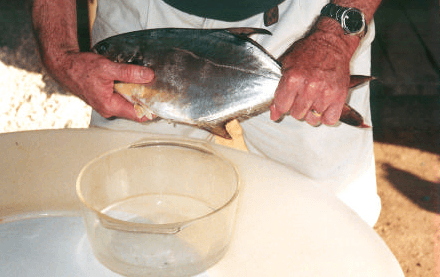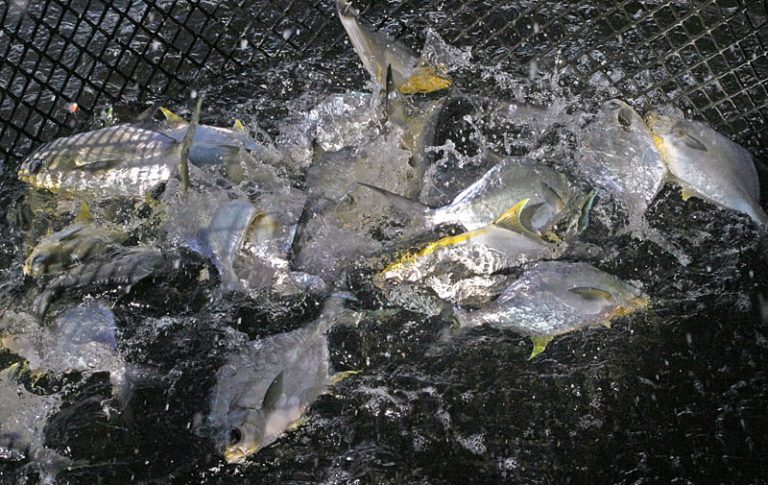The Process
To the best of our knowledge the current state of the art for our methods and designs for Pompano fry production is unique and not replicated anywhere in the world for any species of tropical marine pelagic egg fish. The owner developed this culturing approach starting in 1972. Now known as the “McMaster Method for Larval Rearing of Warmwater Marine Pelagic Egg Species“. The basic design and methods have been continually refined with the use of diet and improved over the last 48 years. The current evolution of methods, designs, and practices yields some of the best egg to metamorphosed fry results anywhere for any similar marine pelagic egg fish. Further, this methodology yields less than 1% malformations and runts. Currently, these procedures yield an egg to fry survival of, on average, 35%. The hatchery cycle from egg to fry is on average 22 days. There is no limit as to how many Pompano fry can be produced as total numbers are merely related to the size of facility.
The artificial inducement of adult pompano to produce quality eggs has been refined through diet and the use of HCG as an ovulation agent to produce on-demand, controlled spawning. In the USA and Europe, HCG is the only FDA approved spawning chemical that can be used with broodstock Pompano to produce fish for human consumption. MTI, Inc and Pompano Farms, LLC have refined Pompano spawning protocol to produce year round , on-demand spawning. The average spawn success of selected broodstock Pompano is 66% and results in 100,000 eggs per pound of spawned adult. There is no limit to the number of Pompano eggs that can be produced since total numbers are merely related to the size of the broodstock facility. The projected size of the crop of fish to be produced determines the size of the broodstock facility.






